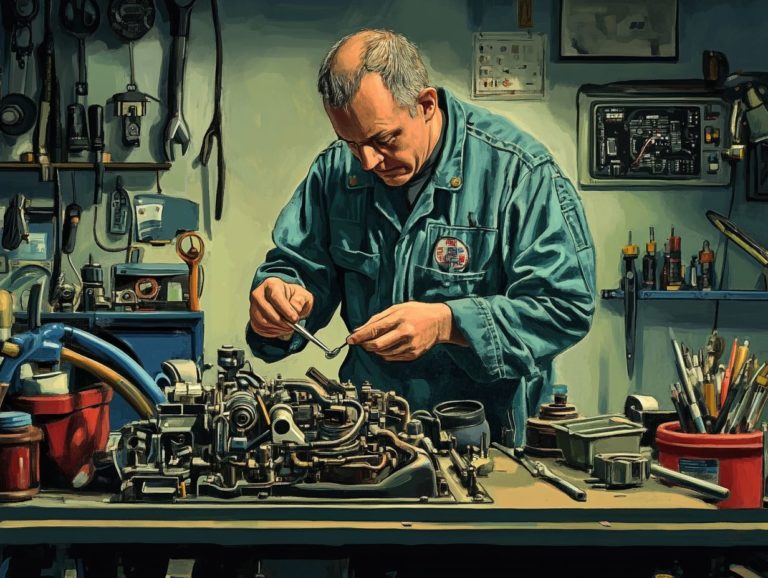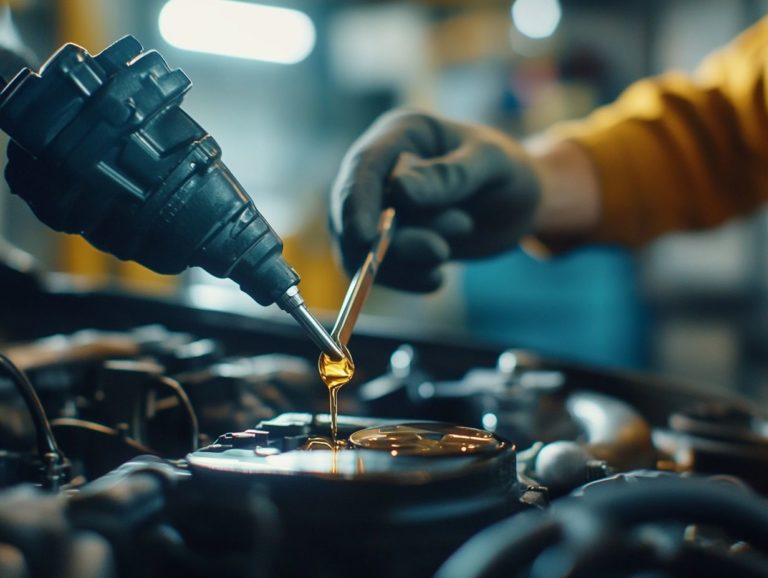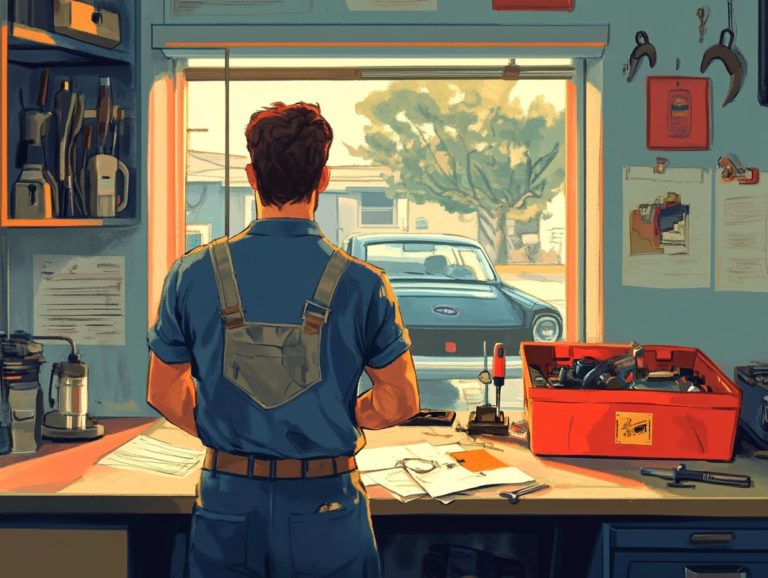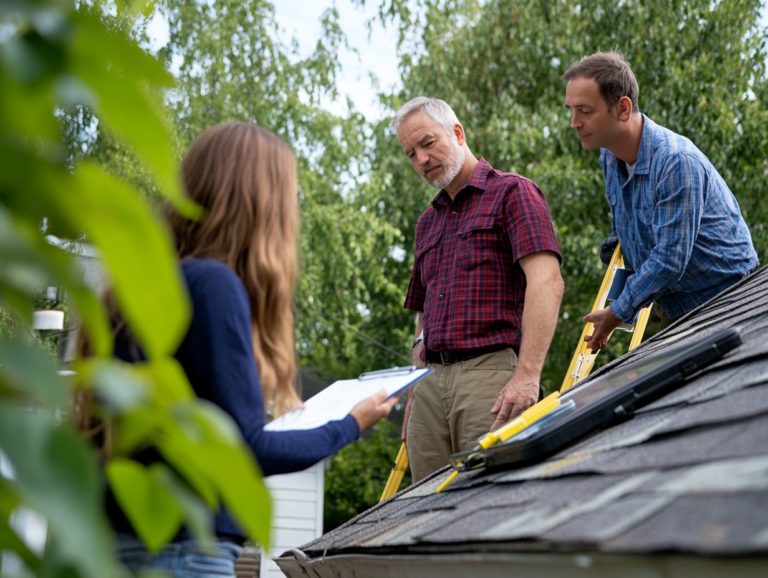How to Maintain Your Car’s Safety Features?
Car safety features are essential for safeguarding you and your passengers as you navigate the roads. They need regular maintenance to perform at their best.
This article delves into the significance of keeping these features in optimal condition. It covers everything from common components like airbags and anti-lock brakes to more advanced driver-assistance systems.
You ll discover practical maintenance tips, learn how to identify malfunctioning features, and understand when it might be time to consider upgrades. Stay informed and keep your vehicle a safe haven for every journey!
Contents
- Key Takeaways:
- The Importance of Maintaining Car Safety Features
- Common Car Safety Features
- How to Properly Maintain Car Safety Features
- Signs of Malfunctioning Safety Features
- Regular Inspections and Servicing
- Upgrading Car Safety Features
- Frequently Asked Questions
- What are the key safety features of a car?
- Why is it important to maintain your car’s safety features?
- How often should I check my car’s safety features?
- What should I do if I notice any issues with my car’s safety features?
- Is it possible for me to check my car’s safety features myself?
- Are there any additional safety features I can add to my car?
Key Takeaways:
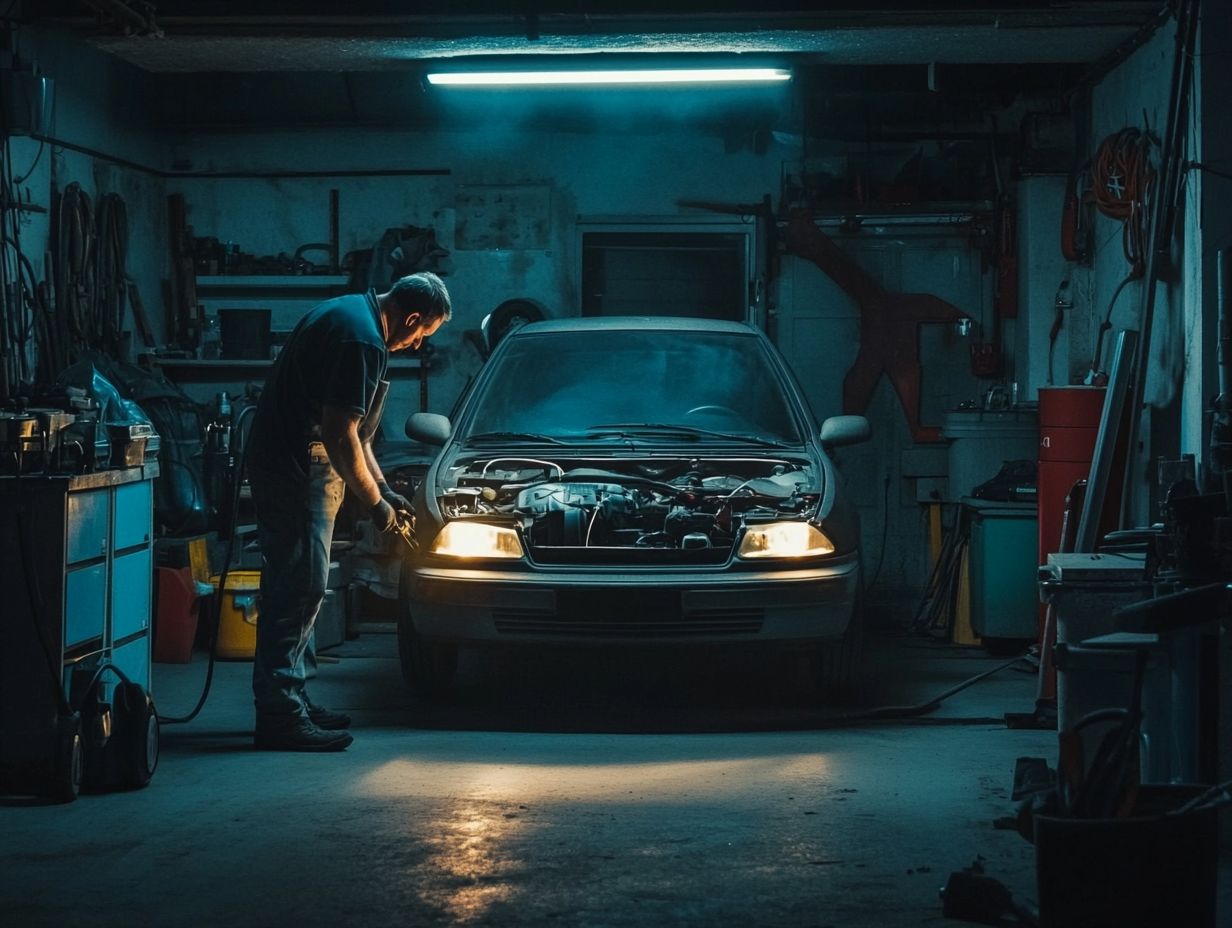
- Regularly maintain your car’s safety features to keep them working well.
- Check and service your vehicle according to the recommended schedule to catch issues early.
- Think about upgrading your safety features for better performance and peace of mind.
The Importance of Maintaining Car Safety Features
Keeping your car’s safety features in top shape is vital. Regular maintenance, including knowing how to maintain your car’s seat belts, extends the lifespan of key parts and improves your driving experience.
This involves familiarizing yourself with the tech-based safety systems in modern vehicles, such as advanced driver-assistance systems (ADAS) and collision alert systems, all designed to protect you and your passengers.
You can improve your safe driving habits with routine inspections and professional servicing. It’s essential to prioritize these aspects in any responsible vehicle maintenance routine.
Why Regular Maintenance is Necessary
Regular maintenance is vital for ensuring that all safety features in your vehicle function effectively, directly influencing the safety of both you and your passengers.
Routine inspections are a core part of this maintenance ritual. They help you identify potential issues before they snowball into serious problems. Take tire pressure, for example; checking it regularly optimizes your fuel efficiency and enhances your grip on the road, significantly reducing the risk of accidents.
Additionally, replacing brake pads at the recommended intervals is essential. Worn-out pads can drastically impair braking performance a critical factor in emergency situations. Neglecting these key components can jeopardize your vehicle’s reliability and compromise essential safety systems like ABS and traction control. This underscores the importance of consistent maintenance to protect everyone in your car.
Common Car Safety Features
Car safety features are essential for safeguarding the well-being of both you and your passengers. They encompass a variety of functionalities, such as airbag systems, advanced driver-assistance systems (ADAS), and collision alert systems, all designed to enhance your driving experience and provide peace of mind on the road.
Overview of Different Safety Features
Modern vehicles come equipped with a range of safety features designed to enhance your protection while boosting your awareness of the surroundings.
These advanced systems work seamlessly together to cultivate a safer driving environment. Take, for instance, the Anti-lock Braking System (ABS), which prevents wheel lockup during sudden stops, granting you superior control on slippery surfaces.
Meanwhile, parking sensors lend a hand when navigating tight spaces, providing audible alerts to help you detect obstacles. Blind-spot detection technology serves as your vigilant co-pilot, alerting you to vehicles that might slip outside your peripheral vision, significantly lowering the odds of collisions during lane changes.
Rearview cameras offer you a crystal-clear view of what’s behind, making reversing a breeze. Together, these features elevate your driving experience, ensuring that both you and your passengers, as well as pedestrians, remain secure on the road.
How to Properly Maintain Car Safety Features
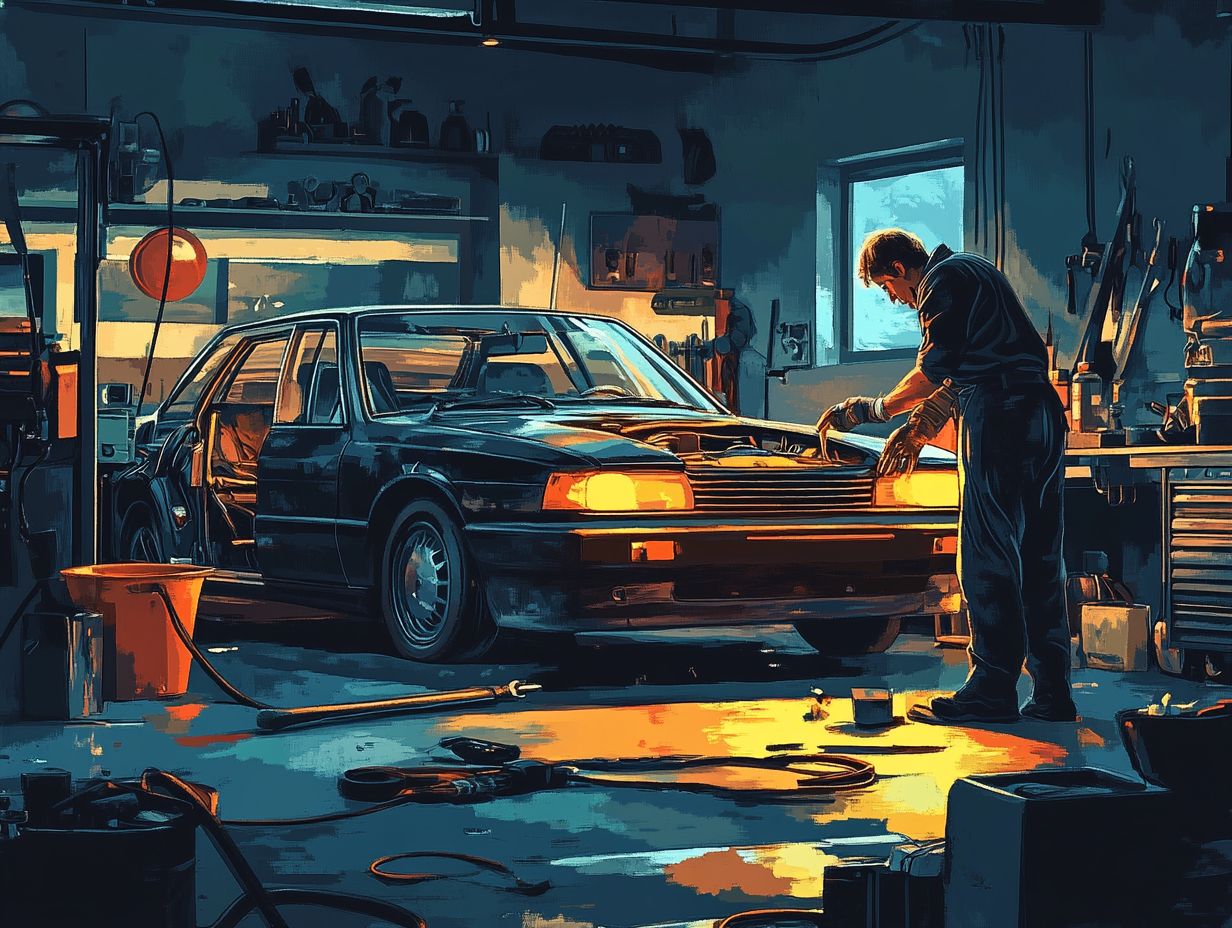
Maintaining your car’s safety features is essential for ensuring they operate at their best. This involves a series of proactive measures, such as conducting regular vehicle inspections and meticulously cleaning vital components like sensors.
Taking these steps enhances safety and contributes to the longevity of your vehicle’s performance.
Maintenance Tips and Techniques
To keep car safety features in top shape, stick to a regular maintenance schedule that includes checking battery terminals and monitoring tire pressure systems.
It’s wise to routinely inspect brake pads, fluid levels, and wiper blades to elevate your vehicle’s safety. Regularly evaluating tire tread depth can help you avoid hydroplaning and boost traction, especially in challenging weather conditions.
You re encouraged to seek professional servicing for a thorough inspection, as trained technicians can spot underlying issues that might slip past your own inspections. By maintaining a well-organized schedule for routine inspections, you adopt a proactive approach to vehicle safety, ensuring that your systems stay functional and reliable all year round.
Signs of Malfunctioning Safety Features
Spotting malfunctioning safety features quickly can save lives! Timely identification not only helps prevent accidents but also ensures the safety of your vehicle.
Identifying and Addressing Issues
Identifying and addressing issues with safety features demands a nuanced understanding of your vehicle’s tech-based safety systems, such as airbag systems and driver-assistance technologies that help you drive safely by alerting you to dangers.
This knowledge is vital, enabling you to effectively identify potential problems that could jeopardize safety. A key element to consider is the collision warning system, which alerts you if you’re about to crash into something. If these systems exhibit signs of malfunction, it s crucial to diagnose the issue quickly to maintain optimal safety on the road.
Starting with thorough vehicle diagnostics can help you pinpoint specific failures. When issues arise that fall outside your expertise, seek professional assistance. Technicians who specialize in vehicle safety technologies can deliver the necessary repairs and maintenance to ensure all safety features are operating seamlessly.
Regular Inspections and Servicing
Regular inspections and professional servicing are essential for you to maintain automotive safety, ensuring that all safety features operate correctly and efficiently.
Prioritizing these practices enhances your vehicle s performance and provides you with peace of mind on the road.
Recommended Schedule and Procedures

Establishing a recommended maintenance schedule is essential for you as a car owner to ensure the ongoing effectiveness of your vehicle s safety features and components, such as brake pads.
Regular checks can help you pinpoint wear and tear before they escalate into costly repairs or safety hazards. Stick to a timetable that includes oil changes, tire rotations, and brake inspections typically every 5,000 to 7,500 miles or as specified in your owner s manual.
Routine inspections not only extend the life of your vehicle but also significantly enhance overall automotive safety by ensuring that vital systems, like steering and suspension, are functioning properly.
You re encouraged to maintain comprehensive records of all maintenance performed, which can prove advantageous when it comes time to resell your vehicle.
Upgrading Car Safety Features
Upgrading your car’s safety features can greatly enhance its protective capabilities and elevate your overall driving experience. By investing in these advancements, you’ll enjoy a multitude of benefits that come with improved safety and peace of mind.
Don’t wait! Upgrade your car’s safety features today for a safer tomorrow!
Options and Benefits of Upgrades
You have many options for upgrading your car’s safety features, including advanced collision alert systems and electronic stability control, a system that helps prevent skidding. These features make your car safer by alerting you to potential dangers and aiding in maintaining vehicle stability during challenging driving conditions.
Integrating lane departure warnings and blind spot monitoring systems can further improve your vehicle s safety profile.
A vital aspect of this discussion is the use of child safety seats. These seats are crucial for keeping kids safe. Proper installation and adjustment reduce the risk of injury in an accident and ensure children are securely fastened.
Watch this video to learn more about upgrading car safety features:
Frequently Asked Questions
What are the key safety features of a car?
The key safety features of a car include seat belts, airbags, anti-lock braking systems, and electronic stability control.
Why is it important to maintain your car’s safety features?

Maintaining your car’s safety features is crucial for ensuring they function properly, and knowing how to maintain your vehicle’s safety features can help prevent accidents and protect you and your passengers in a collision.
How often should I check my car’s safety features?
It is recommended to check your car’s safety features at least once a month or before embarking on a long trip.
What should I do if I notice any issues with my car’s safety features?
If you notice any issues, such as a malfunctioning airbag light or unusual sounds from your brakes, have them checked and repaired by a certified mechanic as soon as possible.
Is it possible for me to check my car’s safety features myself?
While some basic checks can be done by car owners, it is recommended to have a professional mechanic perform regular maintenance and repairs to ensure everything is functioning properly.
Are there any additional safety features I can add to my car?
Yes, various aftermarket safety features can be added, such as backup cameras, blind spot monitors, and lane departure warning systems. It is important to research and consult with a professional before adding any features to your car.
Check your car s safety features today to keep you and your loved ones safe on the road!

